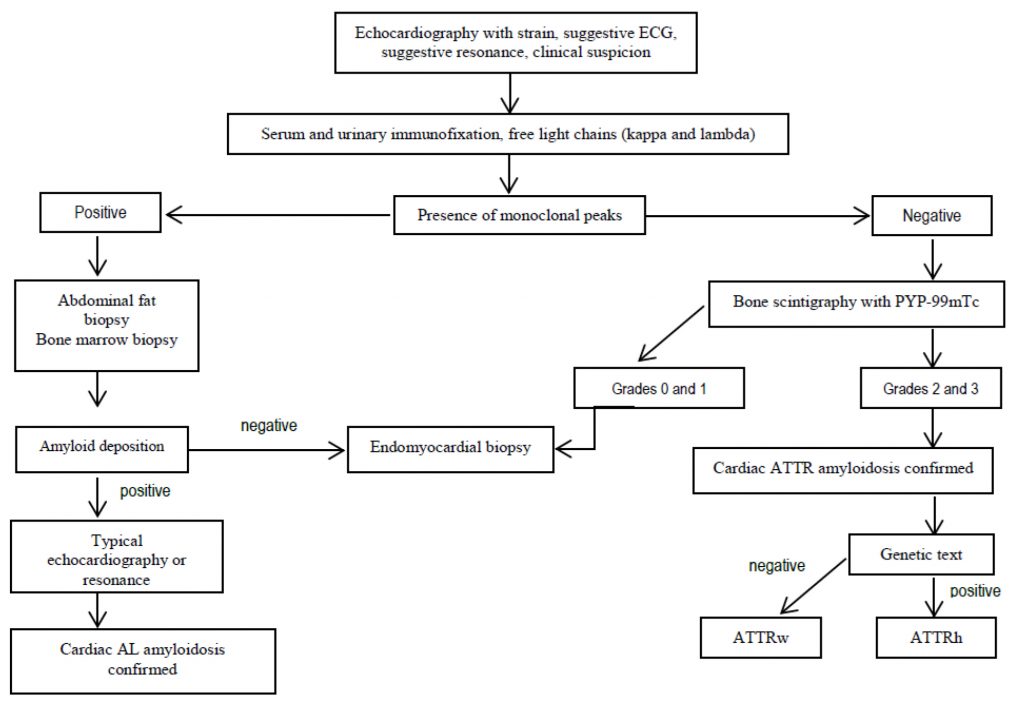Arq. Bras. Cardiol. 2022; 118(2): 422-432
Clinical, Laboratory, and Imaging Profile in Patients with Systemic Amyloidosis in a Brazilian Cardiology Referral Center
This Original Article is referred by the Short Editorial "Amyloidosis for Cardiologists".
Abstract
Background
Systemic amyloidosis is a disease with heterogeneous clinical manifestations. Diagnosis depends on clinical suspicion combined with specific complementary methods.
Objective
To describe the clinical, laboratory, electrocardiographic, and imaging profile in patients with systemic amyloidosis with cardiac involvement.
Methods
This study was conducted with a convenience sample, analyzing clinical, laboratory, electrocardiographic, echocardiographic, nuclear medicine, and magnetic resonance data. Statistical significance was set at p < 0.05.
Results
A total of 105 patients were evaluated (median age of 66 years), 62 of whom were male. Of all patients, 83 had transthyretin (ATTR) amyloidosis, and 22 had light chain (AL) amyloidosis. With respect to ATTR cases, 68.7% were the hereditary form (ATTRh), and 31.3% were wild type (ATTRw). The most prevalent mutations were Val142Ile (45.6%) and Val50Met (40.3%). Time from onset of symptoms to diagnosis was 0.54 and 2.15 years, in the AL and ATTR forms, respectively (p < 0.001). Cardiac involvement was observed in 77.9% of patients with ATTR and in 90.9% of those with AL. Alterations were observed in atrioventricular and intraventricular conduction in 20% and 27.6% of patients, respectively, with 33.7% in ATTR and 4.5% in AL (p = 0.006). In the ATTRw form, there were more atrial arrhythmias than in ATTRh (61.5% versus 22.8%; p = 0.001). On echocardiogram, median septum thickness in ATTRw, ATTRh, and AL was 15 mm, 12 mm, and 11 mm, respectively (p = 0.193). Elevated BNP was observed in 89.5% of patients (median 249, ICR 597.7), and elevated troponin was observed in 43.2%.
Conclusion
In this setting, it was possible to characterize cardiac involvement in systemic amyloidosis in its different subtypes by means of clinical history and the diagnostic methods described.
1,689

